Brick Chimneys Are Incompatible With Airtight Homes
Energy Nerd: The possible remedies are all imperfect.
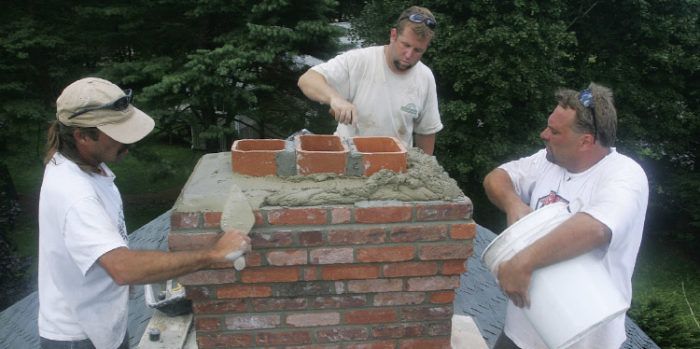
One of my first construction jobs in Vermont, back in the late 1970s, was at an architect-designed home with a massive brick chimney with four flues: one flue for the oil-fired boiler, and three flues for the home’s three woodstoves. The chimney worked fine—mostly because the house had so many air leaks that the woodstoves were never starved for combustion air.
Massive chimneys like the one I remember from that job are expensive to build, but they are often a source of pride for the owner. They provide interior thermal mass; they’re durable; and they’re handsome to behold.
Older cold-climate homes often include similar large brick chimneys with multiple flues. This type of chimney is usually located near the center of the house, so that the bricks and the flues stay as warm as possible.
These days, however, this type of chimney is responsible for a variety of problems. It turns out that massive brick chimneys perform poorly in a modern airtight house.
I recently had a conversation with a builder about problems in a new home with a three-flue brick chimney. Each flue served a separate wood-burning appliance, and when one was being used, makeup air entered the house through one of the unused flues, bringing a sooty smell on the backdrafting air. The builder realized that the problem was due to the fact that the house is relatively airtight. What, he wondered, is the solution?
It’s a tough situation. If a house has a single wood-burning flue, you can install a duct that brings outdoor air to the room with the wood-burning appliance. But in a house with three wood-burning flues, it’s hard to compete with those three flues. The flues are big holes in the home’s thermal envelope, and are likely to be the easiest way for makeup air to enter the house. Even when the flues have some type of damper, the dampers are unlikely to be tight enough to prevent downward airflow.
These holes in the home’s thermal envelope are the likely path for many types of makeup air—not just the combustion air required for the woodstoves. The three flues will also be the path of choice for any makeup air entering the house when the kitchen’s range-hood fan is operating. Of course, the makeup air is likely to pick up a sooty smell on the way into the house.
Possible remedies are all imperfect
All solutions are imperfect, and all solutions include the risk of homeowner complaints. One option is to open a window before lighting a wood-fired appliance.
Another option is to install a 6-in.-round outdoor air duct to each room that includes a wood-fired appliance. This type of duct requires some type of relatively tight damper—possibilities include a motorized damper, a large ball valve usually used for plumbing pipes, or the type of blast gate usually installed in dust-collection systems—and should terminate in a wall-mounted register. (Note that some homeowners complain that this type of makeup-air system can cause cold drafts when open.)
Another option worth considering is to install three chimney-top dampers (one for each flue). Note that most chimney-top dampers are controlled by stainless-steel cables that dangle down the flue—an operating system that works better for fireplace flues than for woodstove flues. The disadvantage of this solution (besides the obvious point that these dampers are made for fireplaces, not stoves) is that the homeowner has to remember to open and close the damper each time the flue is used.
Still another option is to install a powered makeup-air unit controlled by a wall switch. To prevent makeup air from entering the house through the unused chimney flues, the homeowner could turn on the powered makeup-air unit before lighting any of the woodstoves. For more information on powered makeup-air units, see the article “Makeup Air for Range Hoods” on GreenBuildingAdvisor.com.
What if the customer insists on this type of chimney?
Building codes require that new homes pass a blower-door test. Yet some owners who are planning a new custom home still insist on a massive brick chimney with multiple flues for wood-burning appliances. What should builders tell these customers?
The best approach is to explain that wood-burning appliances are incompatible with a modern airtight home. The second-best approach is to explain that there may be a way to include a single wood-burning flue for one woodstove—as long as the homeowner accepts certain conditions that must be thoroughly explained and understood before proceeding—but that multiple wood-burning flues are impossible. Whenever a tight house includes a woodstove, a signed legal waiver would be a good idea.
If an owner insists on including features that are highly likely to cause problems, the best way to proceed is to say, “I’m sorry, but I can’t build that. Good luck finding another builder.”
Check out these other great resources on the topic of chimneys at FineHomebuilding.com:
Is My Abandoned Chimney Hurting My Energy Efficiency?
Choosing a Chimney Flue-Top Damper
Fine Homebuilding Recommended Products
Fine Homebuilding receives a commission for items purchased through links on this site, including Amazon Associates and other affiliate advertising programs.

Smart String Line
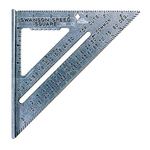
Original Speed Square
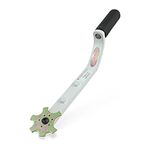
Anchor Bolt Marker
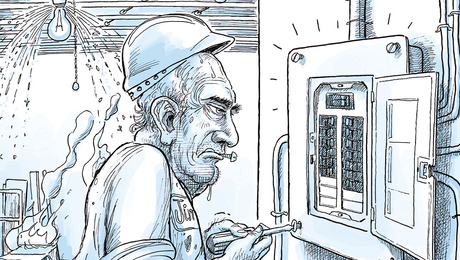

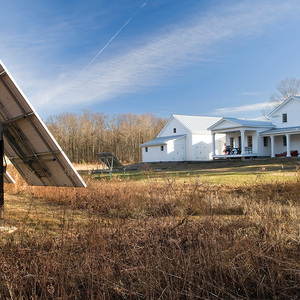


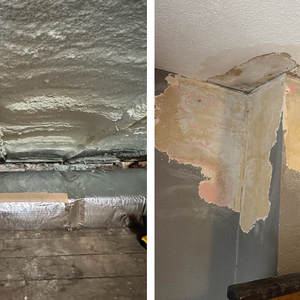



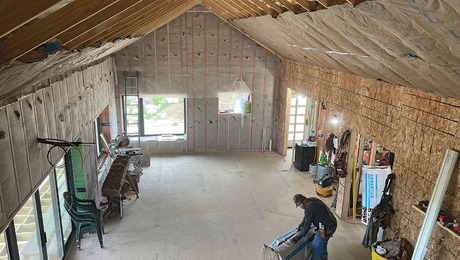
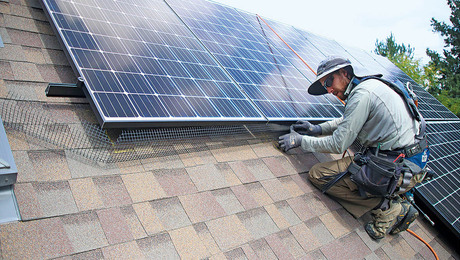
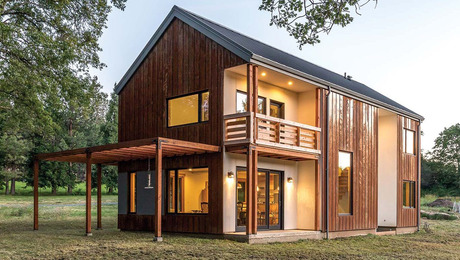
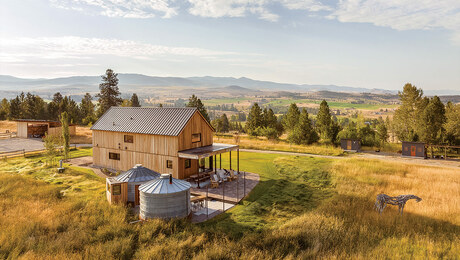
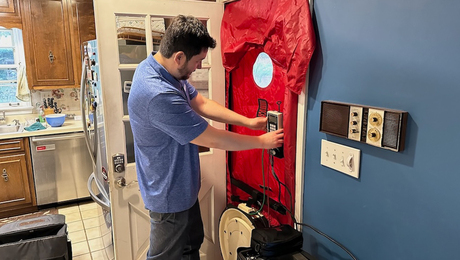

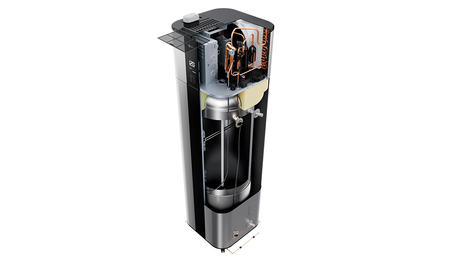









View Comments
You can build a house out of 4' thick foam, no windows, triple entry door, and probably heat it with a 100 watt light bulb. But who wants to live in it?
My wife and I lived in a 250 sq. ft. motor home for 2 years while we were finishing our house. Very inexpensive, but not much room. Our house is 5000 sq ft and it has a Rumford fireplace and would never pass a blower door test, but the window that my wife leaves open 24/7 365 might be part of the problem. She likes fresh air. The power bill is $95 a month and the propane bill is $250. That is just a fraction of what we pay in property taxes.
Bottom line......Build a home with features that you like and can afford.
We have a late 70's home, with 3 chimneys. Thru retrofit, we have it down to .25 ACH 50. Would an ERV/HRV system not be a good solution for the problem(s) described in the article?
Why wouldn't an outside air intake connected directly to each woodburning appliance solve this problem? It's similar to the 6" duct into each room solution, but it doesn't just terminate as an open hole with a blast gate on the wall. It connects all the way to the woodstove. I mean, the flues on a woodburning stove will still not be airtight, and maybe they are ultimately not compatible with modern airtight homes for that reason. But I think an outside air kit for each stove would eliminate the draft coming down the non-operating flues.
They are not incompatible; I could show you many energy efficient homes with massive masonry chimneys that work just fine.
user-7377182, yes. Not sure why the author doesn't respond.
Directly venting to the wood appliance is an obvious solution, along with the top of chimney dampers. Many stoves offer a direct connection, some as add-ons, and you can certainly build a masonry heater that include an outside air source. Yes, you have to remember to open (and close) dampers, but I can assure you you'll quickly remember to open them if your stove starts to draft to the inside of the house. ;-).
A good highly efficient house simply means you don't have to burn as much wood, but a well designed chimney combined with a direct from outside air source will mean you can heat your house with very little wood, and you won't need to leave any windows open (but you might want to if it works too well ;-). Add chimney-top dampers and you'll retain more of the heat when the fire goes out. A stainless steel cable can come through the bricks to make it easy to operate. Adding a little something to remind you to open and close it is not that hard to do. (see attachments) We had to remember to open the pipe damper on our wood stove when lighting the fire. Nothing we ever forgot to do.
We live off grid, heat and cook 100% with wood (in the cold months) with a central chimney in a very efficient house. It's great not having any electric or fossil fueled heating bills (beyond the gas for the chain saws).
Passive House Certified -Giant fireplace-
https://www.opalarch.us/everything-passive-house/
Just get imaginative.